Eat to Heal: Inflammation Diet for Beginners
Imagine waking up every day feeling like you’re ready to conquer the world. You’re in a good mood, have boundless energy, and your body feels great. Sounds dreamy, right?
Well, keeping inflammation in check can help you get closer to that dream!
Inflammation, a natural response to injury or infection, is crucial for healing. However, when it goes from being acute and short-lived to chronic and enduring, it can wreak havoc on your health.
This is where the inflammation diet for beginners comes in. By tweaking what you eat, you can manage inflammation and give your body the boost it needs.
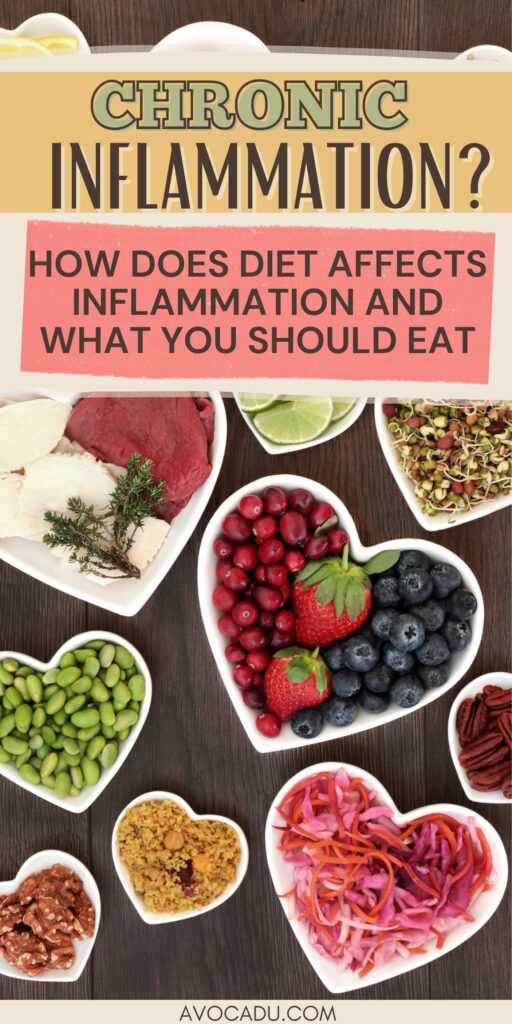
This post may contain affiliate links, which helps keep this content free. Please read our disclosure for more info.
Understanding Inflammation
Before we dive into the nuts and bolts of the inflammation diet for beginners, let’s take a quick look at the world of inflammation itself.
The Body’s Natural Defense
Inflammation serves as one of the body’s natural defenses, playing a critical role in the healing process by responding to injuries and infections.
Acute Inflammation:
When you experience a physical injury or infection, your body’s acute inflammatory response kicks in.
This is a rapid reaction that involves an increase in blood flow to the affected area, bringing in white blood cells to fend off bacteria and facilitate tissue repair.
You might notice redness, heat, and swelling. This is your body working to fix the problem, and it typically resolves once the healing is accomplished. It’s a crucial part of keeping us healthy and recovering from the daily wear and tear.
Chronic Inflammation:
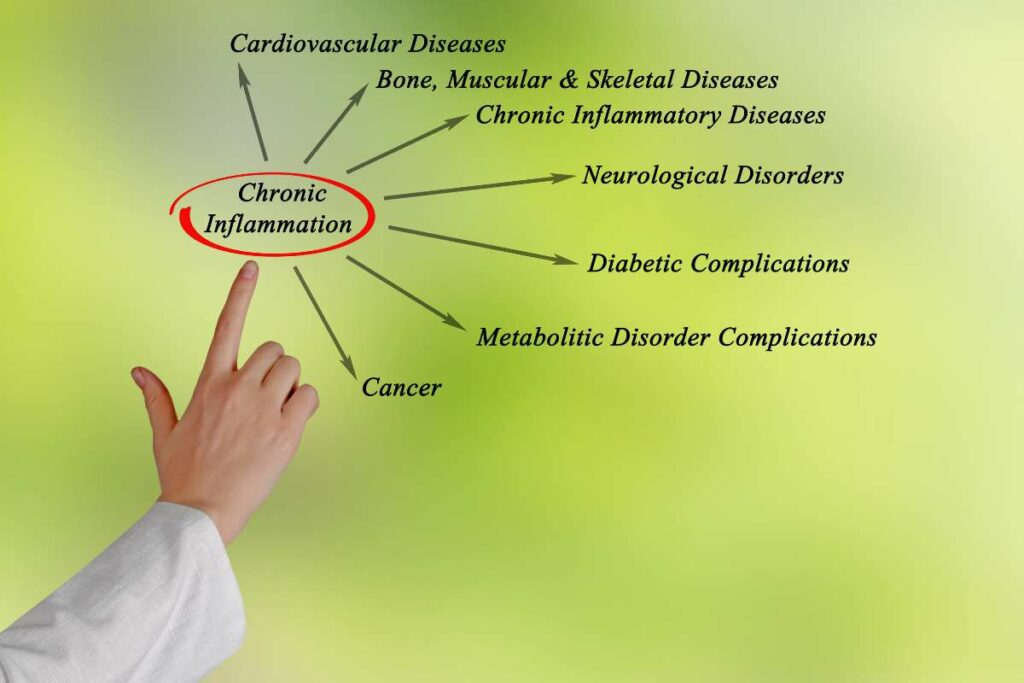
However, there are instances when the inflammatory process lingers, failing to shut down, or activates even when there is no apparent injury or infection.
This long-term, sustained inflammation is termed chronic inflammation.
It may result from various factors, such as lingering infections, long-term exposure to pollutants or irritants, or due to an autoimmune reaction where the body’s immune system mistakenly targets its own cells.
Unlike acute inflammation, chronic inflammation is not always visible and can silently damage tissues over an extended period.
This persistent state of inflammation is concerning because it can contribute to the progression of several chronic diseases, including heart disease, diabetes, and arthritis.
The Importance of Balance:

Maintaining a balance in the inflammatory process is vital for overall health. It is essential to recognize that inflammation is necessary for healing and fighting infections, but it is equally critical to be aware of the detrimental effects of unchecked, chronic inflammation.
Taking proactive steps to support a healthy lifestyle, making mindful dietary choices, and consulting healthcare professionals for guidance can be instrumental in achieving this balance.
Inflammation is an integral aspect of the body’s defense mechanism. It’s like a tool that the body uses to repair itself and fend off infections, but like any tool, it needs to be regulated and used properly to prevent any unintended consequences.
Common Causes of Chronic Inflammation
Chronic inflammation can be likened to a fire that keeps burning. But what keeps feeding the flames? Several factors can trigger and sustain chronic inflammation. Here’s a closer look:
1. Lifestyle Choices:

Poor Diet: Consuming foods high in sugar, unhealthy fats, and processed ingredients can contribute to chronic inflammation. These foods can disrupt the balance of bacteria in our guts and can lead to an overactive immune response.
Lack of Exercise: Living a sedentary lifestyle can contribute to inflammation. Regular physical activity is known to have anti-inflammatory effects.
Smoking and Alcohol: Tobacco smoke contains numerous chemicals that can irritate and inflame your lungs and airways. Excessive alcohol consumption can cause inflammation in the liver and digestive tract.
2. Environmental Toxins:

Pollution: Exposure to air pollution, especially fine particulate matter, can cause inflammation in the lungs and throughout the body.
Chemical Exposure: Being exposed to chemicals in cleaning products, pesticides, or plastics can also contribute to chronic inflammation.
Chronic Infections: Long-term infections, especially when not adequately managed, can cause the immune system to be constantly activated, leading to chronic inflammation.
3. Genetic Predisposition:

Family History: Sometimes, the tendency to have an overactive immune response can be inherited. If your family has a history of autoimmune disorders or allergies, you might be more prone to chronic inflammation.
Autoimmune Disorders: Conditions such as rheumatoid arthritis, lupus, and multiple sclerosis involve the immune system attacking normal cells, which can cause chronic inflammation.
4. Psychological Stress:

Chronic Stress: Constant psychological stress can cause the body to produce stress hormones that can trigger an inflammatory response.
Depression and Anxiety: There is evidence that mental health conditions like depression and anxiety can be linked to increased levels of inflammation in the body.
5. Sleep Disorders:
Insufficient Sleep: Not getting enough sleep or having poor quality sleep can lead to increased inflammation. Sleep is when the body repairs itself, and lack of it can throw the immune system off balance.
Understanding the common causes of chronic inflammation is key to managing it effectively.
Food and Inflammation

It’s well-established that your diet plays a pivotal role in your overall health, but perhaps what’s less known is the significant impact that food can have on inflammation levels in your body.
Understanding this relationship is the foundation for an inflammation diet for beginners.
This approach helps you discern which foods to embrace and which to limit, not just for managing inflammation but also for flourishing in your day-to-day life.
After all, there’s nothing quite like feeling your best and knowing it’s because of the wise food choices you’re making.
Basics of an Anti-Inflammatory Diet
Now that we have a better understanding of the causes of inflammation, it’s time to discuss how diet can be used as a tool to manage and reduce it.
Let’s talk about which foods are known to reduce inflammation and which ones to avoid, as well as provide practical tips for incorporating anti-inflammatory foods into your daily eating habits.
Key Principles and Foods to Include
When approaching an inflammation diet for beginners, it’s important to have a strong grasp of its core principles. These principles will help set the stage for an effective and sustainable eating plan that supports your body in its fight against inflammation.
Prioritize Whole Foods
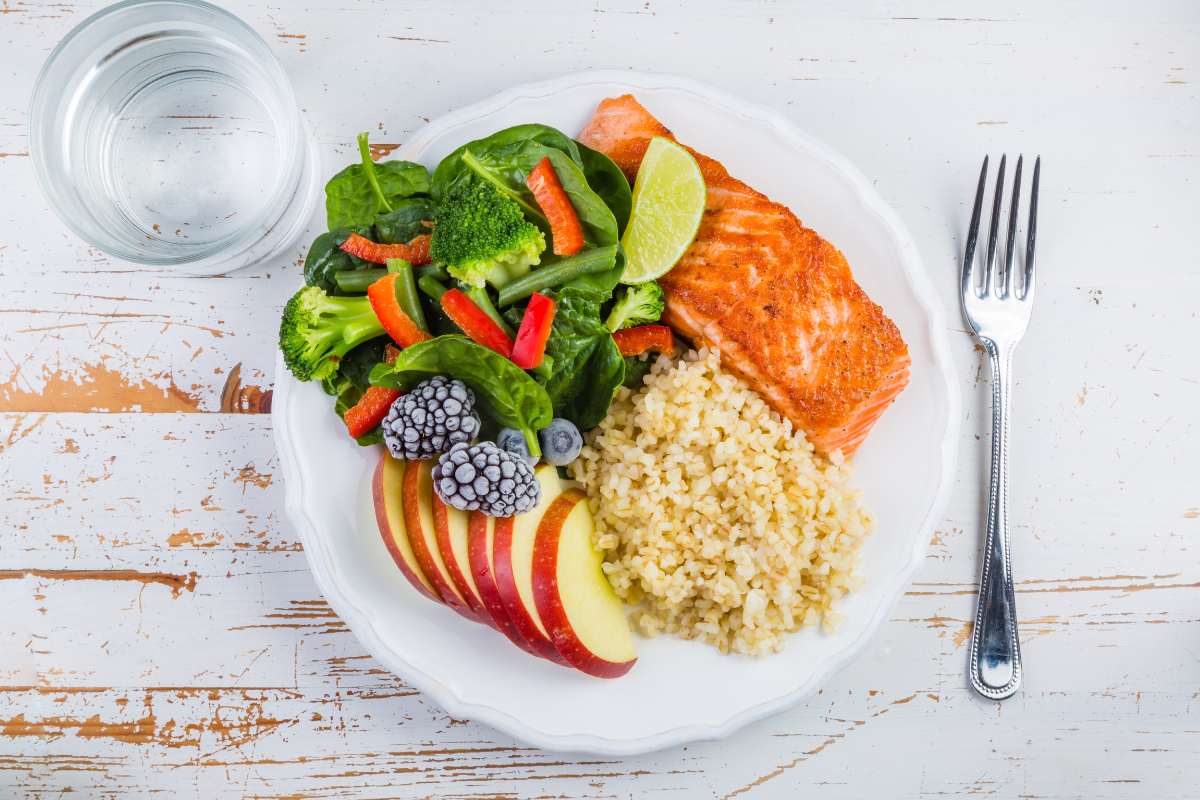
Whole foods are foods that are close to their natural state and have undergone little or no processing. The idea here is simple: the fresher and more natural the food, the better. This means that your plate should be abundant with:
Fruits and Vegetables: Opt for a colorful variety, as different colors often signify different nutrients.
Whole Grains: Choose grains that are unprocessed or minimally processed, like quinoa, brown rice, or whole wheat bread.
Lean Proteins: Incorporate sources like poultry, fish, legumes, and nuts.
Remember, whole foods are typically richer in nutrients and devoid of the additives and preservatives that can exacerbate inflammation.
Balance Macronutrients:
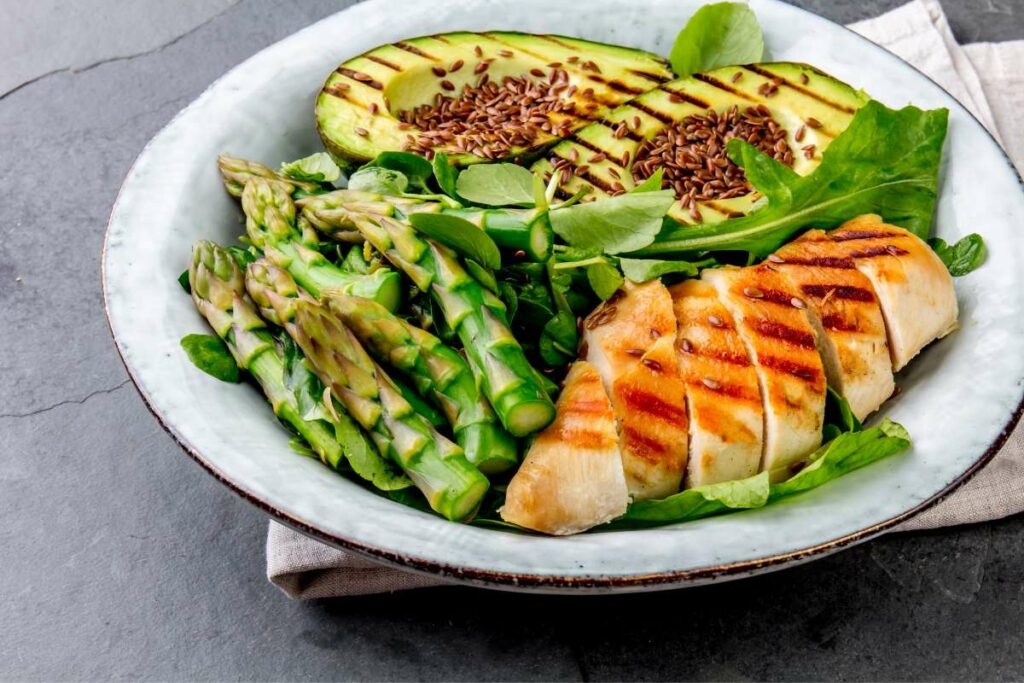
Balancing the three macronutrients – proteins, fats, and carbohydrates – is essential. It’s not just about eating the right foods but ensuring there’s a harmonious balance between them.
Proteins: Essential for repair and maintenance of body tissues. Include lean sources, and don’t forget plant-based proteins like beans and lentils.
Fats: Focus on healthy fats, particularly omega-3 fatty acids found in fish, nuts, and seeds, which have anti-inflammatory properties.
Carbohydrates: Opt for complex carbohydrates found in whole grains, fruits, and vegetables, as they are packed with fiber and beneficial nutrients.
Antioxidants are Your Friends

Antioxidants are substances that neutralize free radicals, which are compounds that can cause damage to your cells and contribute to inflammation.
Vitamins and Minerals: Look for foods high in vitamins C and E, selenium, and carotenoids. These are found in berries, nuts, colorful fruits and vegetables, and fish.
Phytochemicals: These are natural compounds found in plants. Examples include flavonoids in berries and isoflavones in soy.
Including a variety of antioxidant-rich foods in your meals not only combats inflammation but also supports overall health and vitality. It’s like giving your body an extra shield against the forces that can hinder its proper functioning.
By adopting these key principles, the inflammation diet for beginners can become a sustainable lifestyle that fosters well-being and shields against chronic inflammation.
Foods to Avoid or Limit

In the journey of adopting an inflammation diet for beginners, it’s equally important to know which foods to avoid or limit. Some foods, although tempting, can act as catalysts for inflammation. Let’s take a look at these culprits:
Processed Foods:
Processed foods often contain artificial additives, preservatives, and a high amount of sodium, which can contribute to inflammation. Common processed foods include:
- Packaged snacks such as chips and cookies
- Processed meats like bacon, sausages, and deli meats
- Canned soups and vegetables with added preservatives
Reading labels and opting for fresh, minimally processed alternatives can be a game-changer in reducing inflammation.
Sugary Delights:
Sugary foods and beverages may taste delightful, but they are not friendly to your body.
Consuming high amounts of sugar can lead to a spike in blood sugar levels and trigger an inflammatory response. Be cautious of:
- Sodas and sugary drinks
- Candy and chocolates
- Pastries and desserts with high sugar content
Consider substituting these with natural sweeteners like honey or fruits in moderation.
Refined Carbohydrates:
Refined carbohydrates have been stripped of their fiber and nutrients, and can rapidly raise blood sugar levels, leading to inflammation. Foods to be mindful of include:
- White bread
- Pastries and baked goods made with white flour
- White rice
Opt for whole grains and fiber-rich carbohydrates instead.
Unhealthy Fats:

Trans fats and excessive saturated fats can contribute to inflammation and are detrimental to heart health. Watch out for:
- Foods with partially hydrogenated oils
- Fried foods
- Fatty cuts of red meat
- Full-fat dairy products
Choose healthier fats, like those found in avocados, nuts, seeds, and fatty fish.
Certain Meats and Dairy:
Some red meats and dairy products, especially when consumed in large quantities, can be pro-inflammatory. This is due to the saturated fats and other compounds they contain. Be mindful of:
- High-fat cuts of red meat
- Full-fat dairy products like cheese and butter
Limiting these foods and choosing leaner proteins and dairy alternatives can help in keeping inflammation at bay.
A Week’s Sample Meal Plan
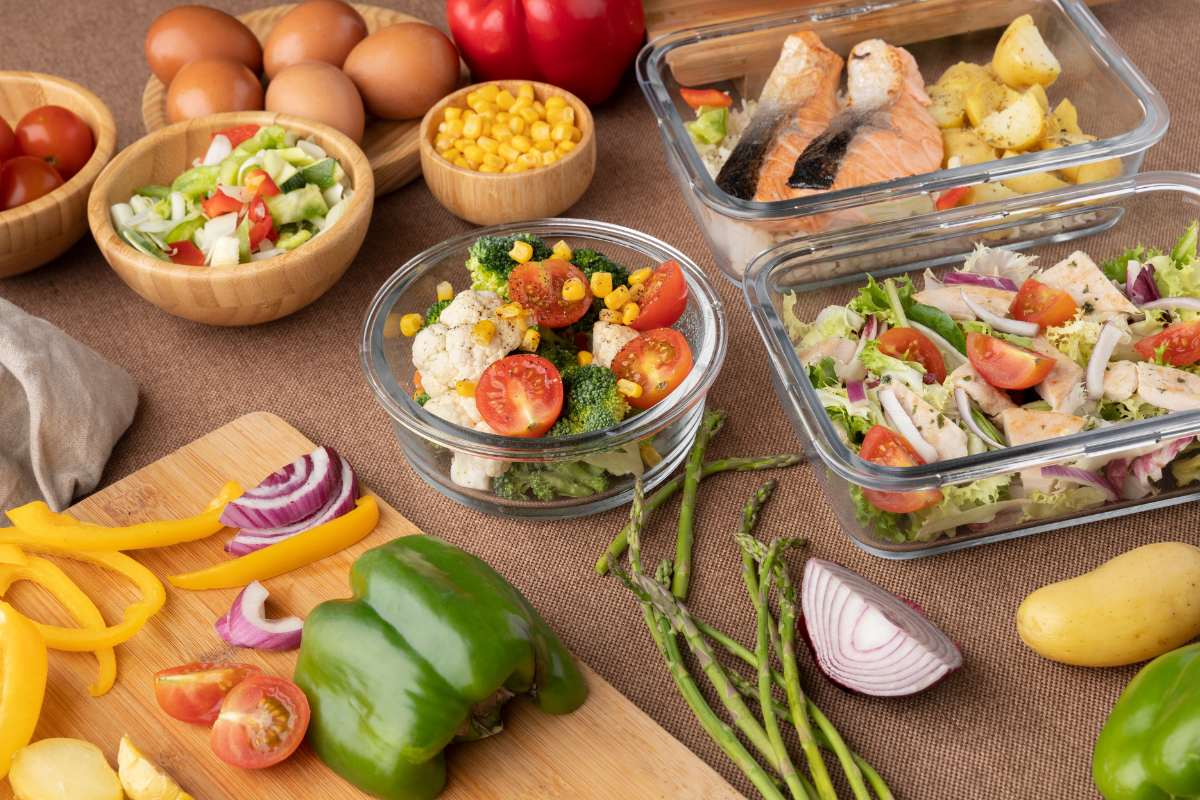
Embarking on an inflammation diet for beginners doesn’t have to be daunting. Here’s a sample meal plan to help you ease into this new dietary lifestyle.
Remember, this plan is just a guide – feel free to adapt it according to your personal preferences and nutritional needs.
Monday:
- Breakfast: Oatmeal topped with mixed berries and a sprinkle of chia seeds.
- Lunch: Grilled chicken salad with leafy greens, cherry tomatoes, cucumbers, and a vinaigrette dressing.
- Dinner: Baked salmon served with quinoa and a side of steamed vegetables like broccoli and carrots.
- Snacks: A handful of almonds and a piece of fresh fruit.
Tuesday:
- Breakfast: Greek yogurt with honey, walnuts, and sliced banana.
- Lunch: Lentil soup with a side of whole-grain bread.
- Dinner: Stir-fried tofu with bell peppers, carrots, and brown rice.
- Snacks: Fresh carrot sticks with hummus.
Wednesday:
- Breakfast: Whole-grain toast with avocado and a poached egg.
- Lunch: Quinoa salad with chickpeas, cucumber, red onion, and feta cheese.
- Dinner: Baked turkey meatballs with whole wheat spaghetti and a side of sautéed spinach.
- Snacks: Fresh apple slices with almond butter.
Thursday:
- Breakfast: Smoothie made with spinach, pineapple, mango, and almond milk.
- Lunch: Grilled turkey sandwich with lettuce, tomato, and a slice of whole-grain bread. Pair with a side salad.
- Dinner: Roasted chicken breast with sweet potatoes and green beans.
- Snacks: A small serving of mixed berries.
Friday:
- Breakfast: Whole grain pancakes topped with sliced strawberries and a drizzle of honey.
- Lunch: Baked falafel with a tahini sauce, served with a mixed vegetable salad.
- Dinner: Grilled shrimp with couscous and sautéed kale.
- Snacks: Greek yogurt with a drizzle of honey.
Saturday:
- Breakfast: Vegetable omelet with spinach, tomatoes, and mushrooms.
- Lunch: Turkey chili with kidney beans and a side of brown rice.
- Dinner: Baked white fish with a side of roasted Brussels sprouts and quinoa.
- Snacks: A small bowl of fresh fruit salad.
Sunday:
- Breakfast: Granola with almond milk, topped with fresh blueberries.
- Lunch: Grilled vegetable wrap with hummus in a whole wheat tortilla.
- Dinner: Beef stir-fry with broccoli, snap peas, and carrots served over brown rice.
- Snacks: A handful of walnuts and dried cranberries.
Sticking to an inflammation diet for beginners is not just about the main meals; it’s also about choosing smart snacks.
Including snacks like nuts, fruits, and yogurt can help you stay full and satisfied while still keeping inflammation in check.
And don’t forget to drink plenty of water throughout the day!
Lifestyle Adjustments to Complement the Diet
While adopting an inflammation diet for beginners is a significant step toward reducing inflammation, it’s crucial to remember that diet is just one piece of the puzzle.
Complementing your dietary changes with positive lifestyle adjustments can amplify the benefits and foster overall well-being. Here are some additional aspects to consider:

1. Physical Activity:
Engaging in regular physical activity is essential for keeping inflammation levels in check. Exercise has been shown to have anti-inflammatory effects and can also improve mood and mental health.
- Aim for Variety: Incorporate a mix of cardiovascular exercises, strength training, and flexibility exercises.
- Stay Consistent: Find a routine that works for you and stick to it, even if it means starting with just a few minutes a day.
2. Stress Management:
Chronic stress is a known contributor to inflammation. Managing stress is thus an important aspect of an anti-inflammatory lifestyle.
- Mindfulness and Meditation: These practices can help calm the mind and reduce stress.
- Engage in Hobbies: Doing things you enjoy can be a great way to relieve stress.
- Stay Social: Maintaining social connections is important for mental health.
3. Sleep Hygiene:

Quality sleep is crucial for the body’s ability to heal and reduce inflammation.
- Create a Sleep Schedule: Go to bed and wake up at the same time every day.
- Optimize Your Sleep Environment: Make sure your sleeping space is comfortable, dark, and free from distractions.
- Wind Down Before Bed: Develop a pre-sleep routine that helps you relax, such as reading or taking a warm bath.
4. Limiting Environmental Toxins:
Being mindful of the environmental toxins you’re exposed to is important. These can include pollutants, chemicals, and certain personal care products.
- Choose Natural Products: Opt for natural cleaning and personal care products.
- Minimize Exposure to Pollutants: If you live in an area with high pollution, try to spend time in greener spaces and consider using air purifiers.
5. Social Support:
Friends and family can play a significant role in your wellness journey. They can offer motivation, encouragement, and companionship.
- Share Your Goals: Let your friends and family know about the changes you’re making and how they can support you.
- Engage in Social Activities: Plan healthy meals or exercise sessions together.
By pairing dietary changes with lifestyle adjustments like regular physical activity, stress management, good sleep hygiene, limiting exposure to toxins, and seeking social support, you can create a synergistic effect that promotes overall health and well-being.
Monitoring Progress and Adapting

As you embark on your journey with the inflammation diet for beginners, it’s important to remember that each individual’s body is different. What works wonders for one person may not have the same effect for someone else.
Therefore, monitoring your progress and being willing to adapt your plan is essential. Here are steps to effectively track your progress and make necessary adjustments:
1. Keep a Food and Symptom Journal:
Documenting what you eat and how you feel can be invaluable. Record the foods you consume and note any changes in your energy levels, mood, and physical symptoms.
- Identify Patterns: Look for patterns between your food choices and changes in symptoms or well-being.
2. Be Patient:
Significant changes don’t happen overnight. It might take some time before you start noticing the benefits of the inflammation diet for beginners.
- Stay Committed: Don’t get disheartened if you don’t see immediate results. Commit to lifestyle changes and give your body time to adjust.
3. Listen to Your Body:
Your body communicates in various ways. Pay attention to signals such as energy levels, digestive comfort, mood, and any signs of pain or discomfort.
- Adjust Accordingly: If you notice that certain foods or practices are not agreeing with you, don’t hesitate to make changes.
4. Consult a Healthcare Professional:
If you have specific health concerns, or if you’re not sure how to adjust your diet for the best results, don’t hesitate to seek the advice of a healthcare professional.
- Professional Guidance: A doctor or registered dietitian can offer specialized advice and help tailor the inflammation diet to your specific health needs.
5. Celebrate Small Wins:

Acknowledging and celebrating even small improvements can motivate you to stay on course.
- Positive Reinforcement: Reward yourself in healthy ways for sticking to your plan and making positive changes.
Remember, adopting an inflammation diet for beginners and making lifestyle changes is a journey, not a destination.
Being attentive to your body’s responses, willing to adapt, and seeking professional guidance when necessary, will place you on the path to improved health and reduced inflammation.
Taking the Next Step: Introduction to the 21-Day Fat Loss Program for Reduced Inflammation
Taking the plunge into an inflammation diet for beginners is a transformative step towards a healthier, more energetic life. It’s about embracing choices that nurture and fortify your body.
To further bolster your journey, let us introduce you to a program that goes hand in hand with reducing inflammation – the 21-Day Fat Loss Program.
The 21-Day Fat Loss Program is a comprehensive plan designed not only to help you shed excess weight but also to promote reduced inflammation.

This program is grounded in the principles of clean eating, balanced nutrition, and an active lifestyle, which are pivotal in mitigating inflammation.
Why 21 Days?
21 days is often cited as the minimum time needed to form a new habit. By committing to this program, you are giving yourself the opportunity to adapt to new dietary and lifestyle changes that can have long-lasting benefits, including managing inflammation.
Embracing an inflammation diet for beginners and coupling it with the 21-Day Fat Loss Program can be the golden ticket to not just weight loss, but a profound enhancement in your overall health.
With informed choices and sustained commitment, you can empower your body to combat inflammation and embrace a more vibrant and energetic life.

